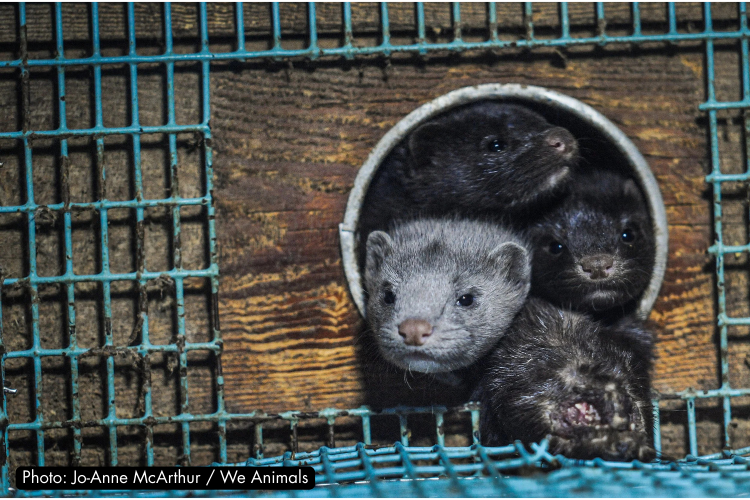Why farm sanctuaries are essential to changing the world for animals
Credit: Farm Sanctuary
Social media is full of photos and reels depicting sun-soaked days out at animal sanctuaries – cuddling piglets, playing with goats – but the meaning of places like this stretch way beyond just frolicking in the grass with cute animals. These places of refuge are not only life-saving when it comes to the animals rescued: they also act as an essential place of education when it comes to animal exploitation.
Farm animal sanctuaries rehabilitate, shelter, and care for animals who have been saved from the global food trade. Sometimes, the animals arrive at sanctuaries through the rescue efforts of activists. Other times, they have been abandoned or surrendered because of sickness or injury.
Rescued from the horrors of factory farming, these animals have only one chance at a life of freedom and dignity: ending up in a sanctuary. These places are vital for animals to ever have hope. As such, they are also a point of hope for animal advocates.
Across the US, there are hundreds of sanctuaries rescuing animals from the torture of animal agriculture. Founded in 1986, Farm Sanctuary is dedicated to combating animal exploitation, advocating for institutional reforms, and fostering an understanding of who farm animals are. It now houses over 600 animals across the states of New York and California. A charity as well as a destination for visits, Farm Sanctuary's place in the animal advocacy world is well-cemented and iconic. Its President and Co-Founder Gene Baur has no doubt about its importance. “Sanctuaries are vital refuges in the fight against animal exploitation, challenging cruelty and abuse with stories of hope and healing, and educating the world about the inherent value of all living beings,” he says.
Credit: Farm Sanctuary
Sanctuaries also fill an important function when it comes to visitors interacting with animals. The road to a kinder world for animals starts with humans changing their views on animals, and nothing is a more effective tool than actually meeting these individuals. Furthermore, the majority of animal sanctuaries serve plant-based food, reminding visitors that kindness to animals should extend to our lifestyles.
A study by Faunalytics found that visiting an animal sanctuary helped people connect with farmed animals and led to changes in how they viewed these animals. Most importantly, it showed that visitors' behaviours actually changed. Getting to know animals, learning about their personalities and behaviours, and actually engaging with them helps people make the connection between the steak on their plate and the living, breathing individual who died for it. It helps bridge the disconnect that food industries work so hard to create, the one where the consumer is completely separated from what goes on in the slaughter industry.
Gene Baur continues, “Farm animal sanctuaries play a powerful role in bridging the gap between what's on our plates and the lives behind it. By providing a space where people can meet rescued animals face-to-face, sanctuaries foster empathy and understanding. Visitors learn about the individual stories of the animals—how they were rescued from neglect or exploitation—and begin to see them as living beings with unique personalities rather than just commodities. By showing animals in a peaceful and natural setting, sanctuaries inspire many to rethink their relationship with animals and make more conscious choices.”
Cashew with Ellie DeSilva at Indigo Farms Healing Sanctuary. Credit: Farm Sanctuary
One such story is that of Julie, a turkey destined for Thanksgiving slaughter. At just four months old, she was brought onto Farm Sanctuary’s New York sanctuary by a devoted supporter after losing her flock. Finding a new home with the sanctuary’s other avian residents, Julie now enjoys a life of freedom. She is far from the only one: raised as part of a school agriculture programme, Cashew the pig was going to be slaughtered at six months old, but the student raising him saw beyond the label and recognised him for the kind individual he was. Affectionate and playful, Cashew was not dissimilar to a family dog. Upon realising this, the family contacted Farm Sanctuary to help Cashew evade his deadly destiny. Through their Farm Animal Adoption Network, the organisation found Cashew a home with a rescuer at Indigo Farms Healing Sanctuary in Oklahoma. These are just a couple of stories of animals who have had another chance at life, thanks to the work of sanctuaries.
Seeing happy animals also acts as a reward to animal advocates. Being an activist in this world can take a heavy toll – especially when faced with the realities of what happens to animals in various industries on a daily basis and the majority of people around us opposing our ideals. The toll that advocacy takes on activists mentally isn't often discussed. Many activists inject good vibes into their activity by visiting animal sanctuaries. This lifts their spirits and helps them to keep going in their campaigning, by reminding them that a happy story is possible.
Running an animal sanctuary is an extremely expensive venture, full of economic hardships. Maintaining the property, feeding the animals, taking on veterinary expenses, and other costs all represent a big burden. Many sanctuaries are largely run by volunteers, meaning that no one is in it for financial gain. Instead, many people work thanklessly and tirelessly to keep sanctuaries afloat. Fundraising operations by sanctuaries are always ongoing, but in a world where countless charities are vying for the public's dwindling donations, raising funds is a challenge. It's always heartbreaking when sanctuaries close – and it's commonly due to finances. Most sanctuaries don't have an answer to these problems. They just keep going, doing the best they can day by day. This is why the financial support of donors is so vital.
At the heart of every legitimate sanctuary is their mission – and their unwavering belief in change. Gene Baur concludes, “Profound epiphanies can occur when visitors look into the eyes of cows, pigs and other animals and see their souls, while being in a physical and social ecosystem where it is ‘normal’ to be vegan and where animals are treated as friends and not food provides community and emotional support for inspiring positive change.” He also stresses that everyone can help make a difference. “By supporting Farm Sanctuary—through donations, volunteering, or your daily choices as a consumer—you help create a future rooted in kindness and respect for all animals."
Written by Sascha Camilli
Sascha Camill is a writer, speaker and vegan fashion expert. She founded the world's first digital vegan fashion magazine Vilda, and is the author of Vegan Style: Your Plant-Based Guide to Beauty, Fashion, Home & Travel. Her podcast, Catwalk Rebel, is out now.
We Have A Favor To Ask…
Species Unite amplifies well-researched solutions to some of the most abusive animal industries operating today.
At this crucial moment, with worldwide momentum for change building, it’s vital we share these animal-free solutions with the world - and we need your help.
We’re a nonprofit, and so to keep sharing these solutions, we’re relying on you - with your support, we can continue our essential work in growing a powerful community of animal advocates this year.







